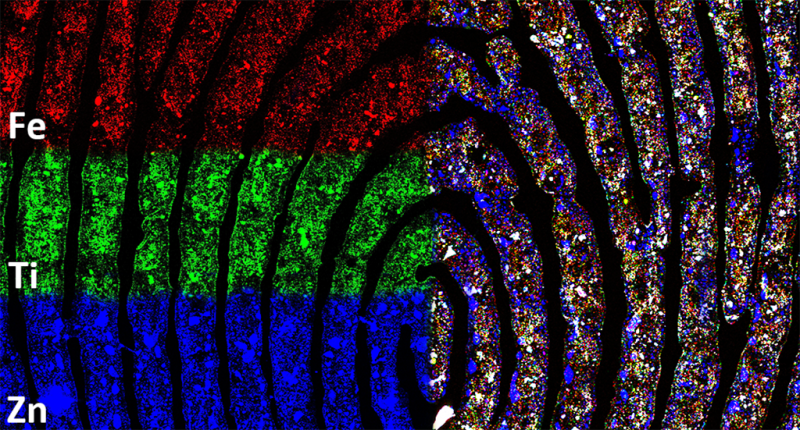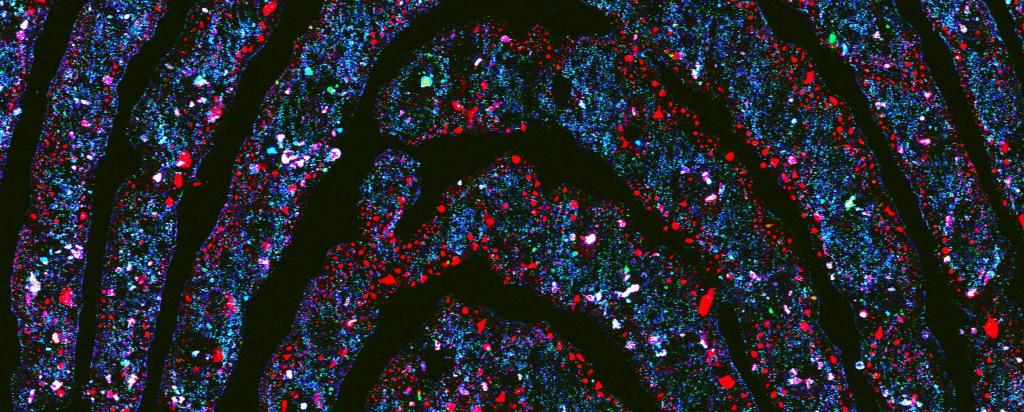

Fingermark forensics
Most fingermark research has largely focussed on the organic material in residues. Consequently, a gap in fundamental knowledge exists when it comes to inorganic components such as metals. The X-ray Fluorescence Microscopy Beamline at the Australian Synchrotron was used to demonstrate that inorganic components could be used as a target for fingermark detection and to help identify potential transfer sources.
Our research

Fingermark elemental distribution maps showing iron, titanium and zinc. Titanium is commonly found in cosmetics.
Researchers from Curtin University have used the X-ray Fluorescence Microscopy beamline to understand the chemical composition and distribution within latent fingermarks. This will help compare and contrast latent fingermark detection with existing methods and identify new strategies to increase detection capabilities.
The researchers were able to study how trace amounts of metals can be transferred to a fingermark due to handing everyday items that range from coins (nickel, copper) to cosmetics (titanium). These findings on metal transfer indicate the potential to give information on a person’s recent activities.
Researchers were able to differentiate effects of water immersion on the elemental content of fingermarks. While many elements in fingermarks wash away after water immersion, it was discovered that iron and titanium and to a lesser degree zinc remained relatively unchanged.
The study highlights that the metals themselves could be used as targets of fingermark detection.
Our impact
This work has enhanced our understanding the chemical composition and distribution within fingermarks, including the transfer processes and persistence of material associated with latent fingermarks.
New strategies to increase detection capabilities have been identified, such as the potential to develop metal sensing reagents as a possible route to detect latent fingermarks in certain settings.